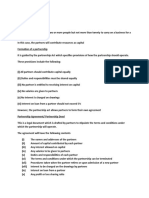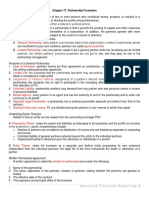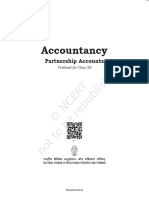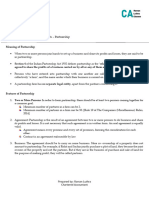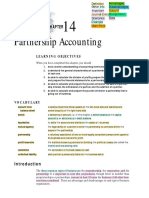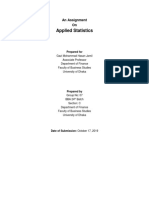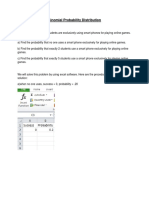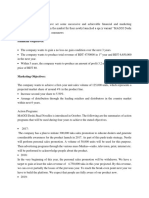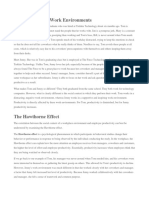0% found this document useful (0 votes)
40 views4 pagesFinancial Analysis and Control: Principles of Accounting
This document provides an overview of partnership accounting principles. It defines a partnership and outlines their key characteristics, including voluntary association, mutual agency, limited life, unlimited liability, and co-ownership of property. It also discusses advantages like flexibility and fewer formalities, as well as disadvantages like unlimited liability and termination issues. The document then covers unique features of partnership accounting, how income/losses are divided, key financial statements, changes in partnership composition, and liquidation procedures.
Uploaded by
safiqulislamCopyright
© © All Rights Reserved
We take content rights seriously. If you suspect this is your content, claim it here.
Available Formats
Download as PPT, PDF, TXT or read online on Scribd
0% found this document useful (0 votes)
40 views4 pagesFinancial Analysis and Control: Principles of Accounting
This document provides an overview of partnership accounting principles. It defines a partnership and outlines their key characteristics, including voluntary association, mutual agency, limited life, unlimited liability, and co-ownership of property. It also discusses advantages like flexibility and fewer formalities, as well as disadvantages like unlimited liability and termination issues. The document then covers unique features of partnership accounting, how income/losses are divided, key financial statements, changes in partnership composition, and liquidation procedures.
Uploaded by
safiqulislamCopyright
© © All Rights Reserved
We take content rights seriously. If you suspect this is your content, claim it here.
Available Formats
Download as PPT, PDF, TXT or read online on Scribd
/ 4






